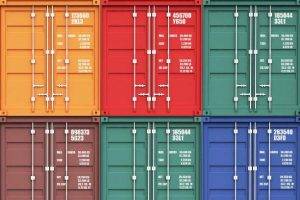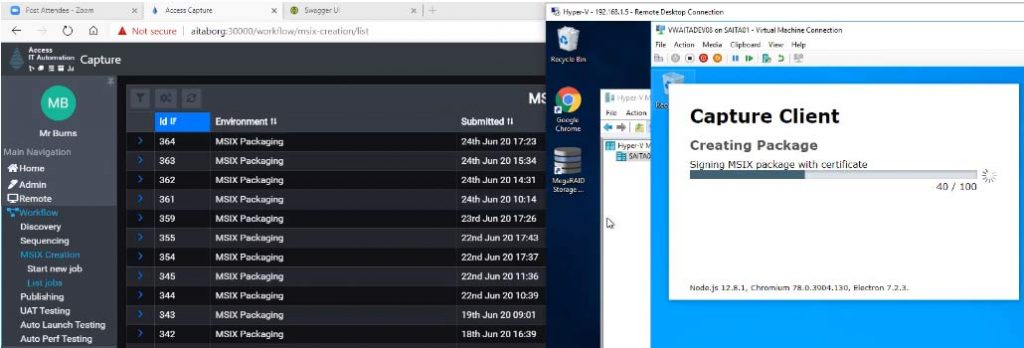Despite improving app compatibility, application packaging is still a time-consuming, manual labor-intensive, and expensive obstacle organizations have to overcome. One reason is the ever-increasing number and complexity of applications within organizations, but more and more, the pace at which apps have to be packaged, tested, and deployed to keep pace with the velocity of change within the organization is becoming a huge roadblock.
 Even with automation tools, the time it takes to physically deploy the packages is burdensome in an enterprise-sized organization. To ease this burden, Microsoft has revamped its application packaging technology with the release of MSIX. Using MSIX in combination with app packaging and testing automation tooling to enable and deploy the packages can greatly reduce costs related to application packaging and deployment, and can increase employee efficiency.
Even with automation tools, the time it takes to physically deploy the packages is burdensome in an enterprise-sized organization. To ease this burden, Microsoft has revamped its application packaging technology with the release of MSIX. Using MSIX in combination with app packaging and testing automation tooling to enable and deploy the packages can greatly reduce costs related to application packaging and deployment, and can increase employee efficiency.
Over the last weeks, we held a very popular MSIX webinar with Microsoft MVP David Nudelman (if you missed it, you can watch it on-demand here) and have written about MSIX Core. Today, I want to focus on a lesser-known part of MSIX called MSIX App Attach. I will show you how to enable it for efficient and seamless packaging as well as how to implement and automate the process.
MSIX and MSIX Core
But before we dive into MSIX App Attach, let’s briefly look at MSIX to put MSIX App Attach into context. MSIX replaces the MSI format and, according to Microsoft, “MSIX is a Windows app package format that provides a modern packaging experience to all Windows apps.” It preserves the functionality of applications and enables deployment using modern methods. This allows enterprises to keep all apps up to date and enables their IT team to deliver them efficiently and reduce resources used.
MSIX Core provides MSIX support to versions of Windows that do not natively support it, versions prior to 1709. There are several limitations such as no container support or Microsoft Store integration. For more info on MSIX Core, please see Microsoft’s documentation.
It is also worth noting that full use of all MSIX features are supported starting with Windows 10 version 2004 (click here for the full list). Additionally, a digital signature is required with MSIX for every app, which is included as part of Access Capture’s automation which we discuss below.
What is App Attach
Microsoft’s App Attach makes standalone MSIX packages available on virtualized desktops, such as Windows Virtualized Desktop (WVD). App Attach creates a separation of the application from the image, allowing the application to be assigned to a device without performing an image update. The application exists outside of the virtual machine, allowing for greater flexibility.
App Attach allows applications to be attached in a containerized way, which is extremely beneficial when combined with FSLogix, a company Microsoft acquired a few years back for this specific purpose. The FSLogix technology links user profile data in non-persistent environments.
Putting this all together allows a user to sign on to a virtual machine, have the applications they need, and have all of their personal settings and permissions in place in a smooth, efficient, and fast manner.
The advantage to using all of these tools is that they create a smooth user experience (UX) that is both device and location agnostic. For example, if a user logs on with their laptop in the U.S. one day, and the next day uses a work laptop in the U.K., that user would have the same experience as if it was the same device.
Another example is one that has become common during the COVID-19 pandemic and involves an employee working from home. If their device fails, i.e. hard drive crash, stolen, etc., as soon as they get on a new device, it will give them the same UX. A user’s profile and apps travel with that user without requiring hours of installs every time a new machine is used.
Before you can use App Attach, you need an MSIX creator. Microsoft has provided a manual tool for this which you can find here, however, if you want an automated MSIX creator, Access CAPTURE provides that.
Note: App Attach is currently in public preview. For full details on how to set it up, click here.
How to Take Full Advantage
Access Capture can automate the process of turning your EXEs, MSIs, and AppV applications into MSIXs, and digitally sign the apps as well. To see the process of packaging an app using Access Capture, you can view our on-demand webinar where I demo it and where Microsoft’s David Nudelman talks about Modern Application and the Modern Desktop.
As the webinar shows, using Access Capture allows you to package as many applications as your infrastructure can handle, so if you have 100 virtual machines at your disposal, you can convert 100 MSIs into MSIXs concurrently.

The above screenshot shows the moment in the package creation process when the package is being digitally signed. Digital signatures are required, and Access Capture automatically signs the apps with your organization’s credentials.
On average, creating an MSIX takes about 5 minutes. With MSIXs, the uninstall success rate is 97%, leaving behind very few unnecessary files.
Conclusion
In the past few years, we have seen the decline of an employee going into the same office every day and using the same device every day. We’ve also seen the rise of shared office environments like WeWork, traveling to different offices and locations, and (as we have seen during the COVID-19 pandemic) working from home for an extended period of time. With the proper technology in place, WVD, App-Attach, MSIX, and an automation tool to put all the pieces together, you can keep your workforce efficient even if their device breaks or the office goes on lockdown.